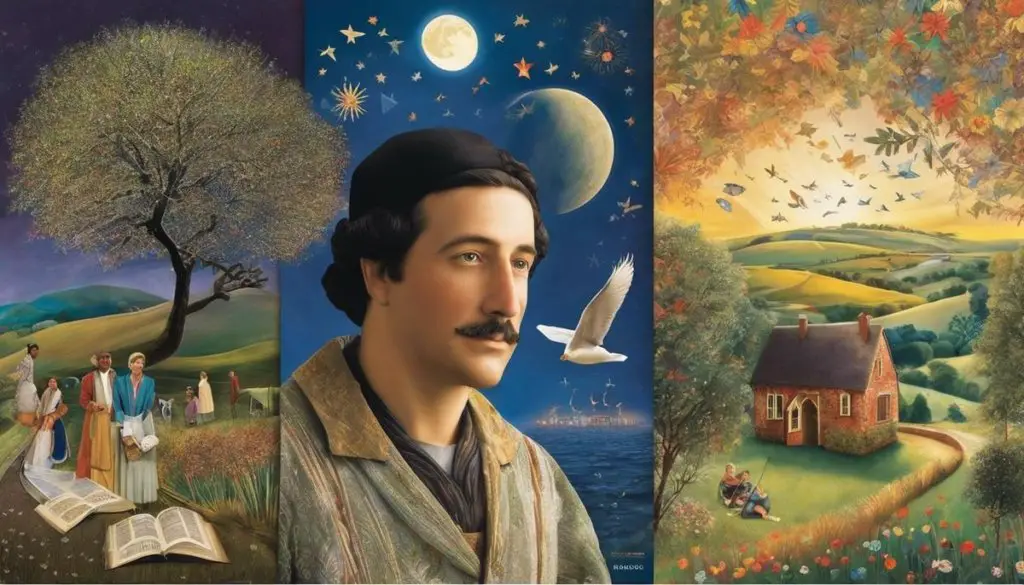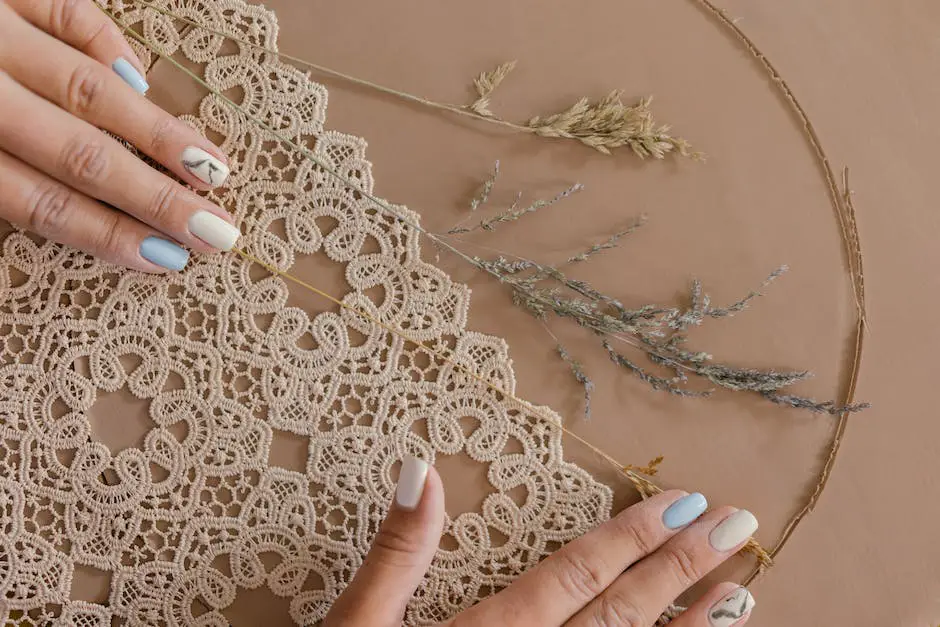Exploring Morris: A Journey in Art

The art of Morris, an enigmatic figure in the tapestry of modern creativity, resonates with a unique blend of personal narrative and aesthetic innovation. Birthed from a milieu rich in cultural ferment, Morris’ oeuvre offers a window into the soul of an artist deeply engaged with the world around them. This essay endeavours to unravel the intricate threads that compose the canvas of Morris’ life, tracing the contours of their inspirations and the defining moments that have shaped their artistic trajectory. From the early stirrings of potential within educational realms to the profound impact of formative personal experiences, we embark on a journey through the evolving panorama of an artist whose signature style is both an intimate diary entry and a bold statement within the visual arts community.
The Life and Inspirations of Morris
The Artistic Weave: Unravelling the Influences of William Morris
William Morris—artist, designer, poet, craftsman—was a figure whose impact on the decorative arts is as rich and enduring as the patterns he designed. His work, an intricate tapestry of medieval admiration and nature’s beauty, has left an indelible mark on art, design, and the movement that he has come to symbolise—the Arts and Crafts Movement. Let us explore the various threads of influence that interlaced to shape Morris as an artist.
The Medieval Tapestry:
Morris’s love affair with the medieval age is perhaps the most defining aspect of his work. The allure of the medieval world—with its romance, chivalry, and commitment to artisanal quality—provided Morris with an escapade from the industrial tumult of Victorian England. Inspired by the works of John Ruskin, Morris’s fascination with medievalism wasn’t solely aesthetic; it was steeped in a nostalgia for the communal spirit and the guilds of craftsmen. This influence is apparent in his creations, from the hand-woven textiles to the stained glass redolent of Gothic cathedrals.
The Enchantment of Nature:
Equally influential was Morris’s adoration for nature. His designs are a verdant sprawl of foliage, flowers, and wildlife, bursting in harmonious, repetitive patterns. He translated his botanical expeditions into his works, believing that art should imitate the unfurling beauty found in the natural world. Morris’s organic motifs were more than mere decoration; they spoke of a philosophy that saw beauty in the truth of nature, rather than the artificiality of factory production.
The Embrace of Craftsmanship:
An iron-willed opponent to the mechanisation of the Industrial Revolution, Morris championed the return to handcraftsmanship. His reverence for traditional textile techniques like block printing, tapestry weaving, and dyeing with natural materials reinvigorated these crafts. In his workshop, he nurtured skills that he felt were being eroded by mass production. Each piece that left the studio was imbued with the personal touch of an artist – something he believed was integral to the value of any work of art.
The Social Palette:
Not to be overlooked is Morris’s deep-seated social conscience, which coloured his artistic endeavours. An ardent socialist, he hoped to instigate change in society, and his art became a manifesto for his beliefs. By making beautiful objects that integrated function and form, he sought to protest against the dehumanising effects of factory labour. Morris envisioned an egalitarian world where art was accessible to all and created by all—not a commodity for the privileged few.
The Collaboration of Fellowship:
The influence of peers such as Dante Gabriel Rossetti, Edward Burne-Jones, and Phillip Webb was vital in the maturation of Morris as an artist. These colleagues, notably from the Pre-Raphaelite Brotherhood, shared a passion for reviving the artisan spirit and rejecting the low-quality production of the time. Through collaboration, they cross-pollinated ideas and created an artistic milieu where creativity could bloom unfettered by the constraints of traditional aesthetic sensibilities.
In summary, the artistry of William Morris was an alchemy of medieval romance, natural wonder, skilled craftsmanship, social vision, and collaborative spirit. These influences mingled within Morris’s creative cauldron, producing works not only of visual splendour but also of guiding principles for a more beautiful, equitable world in which we live and create. Understanding the weft and weave of these influences grants a deeper appreciation for the legacy of Morris—an artist whose vibrancy is everlasting, not merely in the objects left behind but also in the values he championed through his creative journey.

Analyzing Morris’ Signature Style
The Singular Aesthetic of William Morris: An Emblem of Artistic Distinction
As one delves further into the striking world of William Morris’s artistry, it becomes evident that his unique style is not merely a confluence of medieval nostalgia and nature-inspired motifs, characteristic though they are. There’s an additional innovative substance that sets Morris’s creations apart: his utilisation of colour and pattern, his integration with literary and historical themes, and the accessibility and impact of his designs.
Morris’s masterful execution of colour is a vibrant thread interwoven throughout his tapestries, wallpapers, and textiles. Unlike others of his era, Morris favoured a rich palette that drew from his preference for natural dyes, which contributed to the timeless quality of his works. The organic subtlety of these hues was in stark contrast to the garish chemical dyes rampant during the Industrial Revolution. It was Morris’s dedication to authenticity in colour that helped forge his unparalleled visual lexicon that whispers in hushed tones of the earth and its myriad treasures.
Central to Morris’s ideology was the symbiosis of the visual and literary arts. His designs often shimmered with the essence of Chaucer and the romanticism of the Arthurian legends, infusing a narrative element to what may just seem, to the untrained eye, merely ornamental. This integration set his work on a higher arch, allowing it to conversate with onlookers, offering stories sinuously woven into the very fabric of the patterns.
Moreover, the way Morris’s designs have permeated a variety of spaces, from stately homes to public institutions, attests to their extraordinary versatility and his egalitarian ethos. The adaptability of his patterns to different environments and functions reveals a thoughtful consideration beyond the mere aesthetic. By embedding functionality within the scenic beauty of his designs, Morris ensured that artistry and utility were not mutually exclusive but perfectly harmonised for day to day appreciation.
This accessibility of Morris’s art, with designs widely disseminated through Morris & Co., underscored his passion for democratising beauty. These are not patterns meant for the bourgeoisie to squirrel away but a populist vision. It’s this desire for inclusion, for art to imbue the everyday lives of the people, that gave rise to Morris’s legacy—a legacy that continues to inspire contemporary design.
Finally, Morris’s style remains unique for its impact on modern aesthetics and environmental precedents. His conscientious approach to materials and methods presaged the contemporary ethos of sustainability, echoing through current discussions on ethical design practices.
The distinctive mosaic of Morris’s methods – his colours drawn from the earth, the literariness in his weaving, his kinship with all strata of society, and his foresight in sustainability – unite to enshrine him in realms that outpace the confines of his time. These qualities are like pieces of a stained glass window, each a different hue and shape, seamlessly coming together to tell an arresting narrative—a tale of beauty, conscience, and timelessness.

Morris’ Contributions to the Art World
Embracing Beauty in Utility: The Legacy of William Morris in Today’s Artistic Vanguard
Beyond the sumptuous hues and textures, the work of William Morris entwined the allure of storytelling with the tangible. His designs, which incorporated literary and historical motifs, were not merely decorative. They narrated tales, celebrated lore, and captured moments of medieval chivalry. This ingenuity laid a path for integrating visual storytelling in functional objects—a concept emulated by contemporary designers who endeavour to infuse narrative and emotion into the pieces that grace our daily lives.
The adaptability of Morris’s designs further illustrates his foresight in blending utility with ornamentation. Aesthetically versatile, they grace the walls of modest cottages and grand institutions alike, a testament to their timeless appeal and functionality. Artists and designers of various fields continue to draw inspiration from this versatility, crafting works that seize the Morris philosophy—beauty belongs to everyone, everywhere.
Morris’s tenacious crusade for the democratisation of beauty was matched by his conviction that art should be a staple, not a luxury, in the quotidian experience. His designs broke barriers, making exquisite art accessible to the masses. This philosophy resonates with today’s socially-conscious movements that champion affordable and equitable access to artistically enriching experiences.
The fusion of purpose and prettiness within Morris’s work has seeped into the very foundation of modern aesthetics, advocating for a symbiotic relationship between form and function. The contemporary minimalist movement, with its focus on simple, clean lines that serve a purpose while pleasing the eye, owes a nod to Morris’s principles of design.
Equally imperative is the conversation of environmental sustainability—an issue Morris’s ethos implicitly endorsed through the championing of handcraftsmanship and quality materials. His work inspires the current trend towards sustainable design practices, encouraging the production of items with a smaller ecological footprint. Morris reminds today’s artisans to respect nature, not merely as a source of inspiration, but as a precious resource requiring stewardship.
William Morris did more than create patterns; he wove a vision for art’s place in society—a vision that has endured and evolved over time, moulding the contours of contemporary art and design. His life’s work remains an evergreen fountain of inspiration, underscoring the profound ways in which art can touch lives and transform communities. Through each intricate weave and delicate brushstroke, Morris tied the past with the present, and in doing so, charted a path for the future of artistic expression—an inextinguishable legacy that continues to shape the world of art to this very day.

Photo by libraryofcongress on Unsplash
Techniques and Media Used by Morris
In the thrall of artistic exploration, Morris was not only an advocate for beauty in every corner of life but a hands-on creator, engaging intimately with his methods and materials. Diving deeper into his preferred practices sheds light on the textured world he invented—one stitch and brush stroke at a time.
Morris had a penchant for natural dyes, which he championed as part of his rejection of the synthetic aniline dyes that were rife during the Industrial Revolution. He sought to revitalise the vivid hues found in nature, meticulously experimenting with various plants and roots to produce a palette that echoed the organic splendour of the outdoors. This return to traditional dyeing methods not only allowed for a resurgence of naturalistic colours but also spoke to Morris’s environmental leanings, foreshadowing today’s eco-conscious movements in art and design.
When it came to textiles, Morris favoured the use of wool and silk, often employing the techniques of hand weaving and hand-knotting, which were becoming rare skills in his time. By utilising these tactile, labour-intensive processes, Morris’s works connected to a bygone era of artisanal excellence. His textiles resonate with a sense of time and care, evoking the personal touch that machines could never replicate.
Moreover, Morris’s approach extended into printing methods that were equally grounded in historical and manual processes. For his iconic wallpapers, Morris preferred the age-old technique of block printing—an arduous method requiring precise hand-carving of designs onto wooden or lino blocks, followed by the manual application of paint onto paper. This methodology imbued each roll with a unique character, a subtle nod to the individualistic touch of the artisan.
Additionally, traditional methods of bookbinding and typography were dear to Morris. At the Kelmscott Press, he revelled in producing books that were works of art in themselves. His use of handmade paper, intricate woodcut illustrations, and typefaces like the famous ‘Golden’ designed by himself, aligned with his vision of fusing artistry with utility. Each book was not merely a vessel for words but a tactile artistic experience.
In all facets of his work, the guiding thread for Morris was the art of storytelling through handcrafted detail. Each piece Morris created was more than just a functional or decorative item; it was a chapter in a visual narrative that continued to unfold throughout his body of work.
For those who delve into Morris’s legacy, it becomes clear that the mastery lies not solely in the visible splendour of his designs. The true essence of Morris’s oeuvre is the harmony between material, method, and message—a connection that remains ever inspiring to a world that often favours the expedient over the enduring.

The Evolving Nature of Morris’ Art
Transitioning into the latter years of William Morris’s prolific career, one witnesses a distinct shift towards a more streamlined and geometric approach, reflecting his unwavering pursuit of innovation within the domain of decorative arts. As his journey unfurled, Morris found himself seamlessly blending the organic with the ordered, creating patterns that balanced both the free-flowing and the precise.
During this phase, Morris exhibited a newfound enthusiasm for exploring the properties of pure form. This is most evident in designs such as the lesser-known “Marigold,” where the emphasis leans towards symmetry and repetition. Unlike the entwining flora of his earlier work, this later style presents a marked move towards abstraction.
Morris’s exploration of scale also evolved significantly. Early designs displayed an intricate delicacy, whereas later works played with bolder, larger-than-life motifs that commanded attention even from a distance. This boldness did not come at the expense of his beloved intricacies but rather added a new layer of visual engagement to his art.
Even as his style metamorphosed, Morris’s commitment to the integrity and quality of materials remained steadfast. He became increasingly engrossed in the chemistry of colour, with a particular interest in achieving a diverse but harmonious colour palette through the meticulous mastery of natural dyeing techniques. His relentless experimentation further developed the richness and depth his pieces were admired for.
In these later chapters, one also discerns an embrace of exoticism, distilled through Morris’s cerebral lens. Enticed by the allure of Eastern designs, he incorporated these influences without sacrificing the essence that was so distinctively his own. The “Indian” pattern is a quintessential example where these inspirations made their subtle imprint.
As the advent of industrialisation continued to agitate the landscape of arts and crafts, Morris’s response was to streamline his processes without compromising on the quality he held sacred. Even within this modernisation, the spirit of handicraft remained the heartbeat of his work, a testament to his belief in its undying importance.
Morris’s later designs, while undeniably a departure from his initial medieval and nature-inspired motifs, did not lose the essence of what made his work so revolutionary. Instead, they encapsulated the culmination of a life’s passion, a melding of past influences with an adaptive vision for the future of design. He left behind a body of work that not only transformed the Victorian aesthetic but continues to resonate with the design ethos of today, echoing through the halls of sustainability and authentic creation.

Throughout the intricate dance of light, colour, and form, Morris has etched an indelible mark upon the art world. Their body of work, a veritable palimpsest of evolving styles and mediums, continues to intrigue and challenge viewers, inviting them into a dialogue that transcends the temporal boundaries of their oeuvre. As we step back from this exploration of Morris’ artistic sojourn, we are left with a potent sense of an artist whose canvas pulsates with the vibrancy of life itself, echoing an unending quest for meaning and a ceaseless contribution to the continuum of art. Thus, the legacy of Morris endures, as much a beacon for future voyagers in the realms of creativity as a testament to the enduring power of art to reflect and shape the human experience.
Recommend0 recommendationsPublished in Art History







